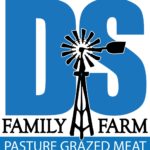Worried about what you are "really" eating? Have peace of mind with pasture grazed meats.
Bionutrient Forage Results
Last year we enrolled in the “Defining Nutrient Density BEEF” project being conducted by THE BIONUTRIENT INSTITUTE (see our June 2022 blog post). We are still waiting for the analysis reports from the harvested beef samples. At this time we do have the Forage analysis report that we can share.

Trying to collect what the herd grazed…
The results below are from forages collected a few weeks before last year’s August beef harvest. We followed the herd and tried to collect a sample of what they were consuming during their typical graze events. The green material collected was predominantly warm-season grasses but also included cool-season grasses, forbs, and some leaves from shrubs and trees we noticed they had browsed. The freshly collected sample was sent to the laboratory in a cooler to prevent spoilage.

In the above test results, the “Median” column represents the testing lab average values for a “mixed hay” sample (best match to what we collected). The “Dry Basis” column displays the results of what we think our cattle were eating at the time. Numbers in orange were below the lab Median and numbers in green were above the lab Median. The bold, dark outline cells, point out items that were either below the 90% Low column or above the 90% High column (depending on if the cell is shaded orange or green). We highlighted in Yellow the macronutrient test results; we are most interested in when trying to get animals “Grass Fat” leading up to harvest.
Forage Test Summary
The above image displays the Dairyland Laboratories, Inc. final results and summary table. We added the box with the Protein: Energy Ratio. This forage sample was collected during the time of year when we are trying to “finish” our Pasture Grazed Beef. DS Family Farm beef are grass-fed their entire lives, what others call Grass Finished Beef. The Protein:Energy Ratio is actually a tool used for human diets. We are not sure if it applies to cattle, but it seems to make sense that the same combination of macronutrients that make humans fat would make other mammals fat. This time of year, we are trying to keep our Pasture Grazed Beef gaining weight (fat) right up to harvest. A Protein to Energy (P:E) Ratio of 0.19 would indicate that cattle consuming these forages would be gaining weight.
Some closing thoughts…
It has been proven through studies, that humans are not very good at trying to collect samples from forages to match what cattle are “actually” grazing. Consistently, cattle will select better forages to consume with their nose (smell best forage) and tongue (rip that exact forage) than what humans will do trying to clip forages behind the herd. This has been proven by comparing human selected samples to what actually ended up in the cattle’s gut (use of esophageal-fistulae). As you look at the data reported above, be assured that the cattle did a better job selecting the best forages available than what we did in trying to collect a sample of what they were eating!
The forage sample is just one piece of the puzzle of information submitted for the Beef Study. We also sent in:
- Soil Sample
- Manure Samples
- Harvested Beef Samples
As more data becomes available we will be happy to share our experience with the study here on our blog.






Pingback: Bionutrient Soil Results - DS Family Farm